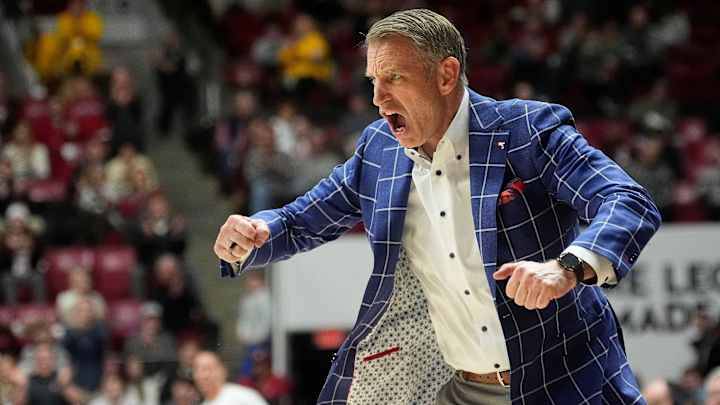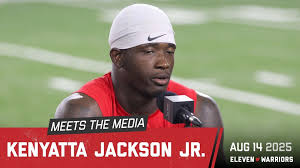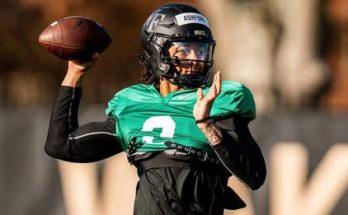The University of Alabama has long been known for its football dominance, but in recent years, the basketball program has carved out its own national identity. Under the guidance of head coach Nate Oats, the Crimson Tide have transformed into a hard-nosed, high-octane basketball powerhouse that doesn’t back down from the spotlight. Now, entering the 2025–26 season, Oats and his staff are making bold, calculated moves to push Alabama even further into college basketball’s elite.
With a revamped roster, headline-grabbing transfer additions, and a maturing core of rising stars, the Crimson Tide are no longer content with simply being competitive—they want to win it all. And in typical Nate Oats fashion, they’re not playing it safe.
Reloading the Roster: Portal Power and Freshman Firepower
Following a Sweet 16 appearance in 2025, the Tide lost key contributors, including All-SEC guard Mark Sears and NBA Draft-bound forward Grant Nelson. But instead of retreating into a rebuild, Oats charged head-first into the transfer portal, landing several high-profile players to reload the arsenal.
The biggest splash came when Derrion Reid, a former five-star recruit from the 2024 class, announced his transfer to Alabama from Georgia. Reid, a 6-foot-8 forward with guard-like skills, never found his footing in Athens but has the raw talent and versatility to flourish in Oats’ fast-paced system. Reid brings a rare combination of size, shooting, and perimeter defense—qualities that perfectly match Alabama’s style.
Joining Reid is Keitenn Bristow, a breakout sophomore wing from UT Arlington who averaged 17.2 points and 6.4 rebounds last season. Bristow may not have had the pedigree of some portal entrants, but Oats was drawn to his relentless motor, three-level scoring, and commitment to defense. “He plays with a chip on his shoulder,” Oats said. “That’s what we need.”
Also entering the mix is Zyon Pullin, a grad transfer from Florida who brings much-needed veteran leadership and playmaking. With his poise, experience, and unselfish approach, Pullin is expected to stabilize Alabama’s backcourt, especially early in the season as younger players acclimate.
On the recruiting trail, Alabama landed Jared Easley, a top-40 national prospect out of Indiana who turned heads with his explosiveness at the McDonald’s All-American game. Easley projects as a combo guard with elite downhill speed and defensive upside. Though he may not start immediately, his development could be a game-changer come SEC play.
Returning Core: Jarin Stevenson and Rylan Griffen Step Into the Spotlight
While the influx of new talent is exciting, Alabama’s success in 2025–26 could hinge on the evolution of returning contributors. Two names stand out: Jarin Stevenson and Rylan Griffen.
Stevenson, a former five-star recruit from the class of 2023, flashed potential last season with his shot-blocking and floor-stretching ability. Now a junior, Stevenson is expected to become Alabama’s anchor in the frontcourt. With added strength and improved footwork, he’s poised to make an SEC All-Defensive Team run, while also contributing 12–14 points per game.
Griffen, meanwhile, is coming off a strong junior campaign in which he averaged 9.8 points while shooting 38% from three. With Sears gone, Griffen will be expected to shoulder a greater offensive load. Oats has praised Griffen’s growth as a leader, calling him “one of the hardest workers we’ve got.” If Griffen can become a consistent scoring threat, Alabama’s offense could be nearly unstoppable.
Tactical Adjustments: A More Balanced Crimson Tide
Known for his “pace-and-space” offensive philosophy, Oats has built Alabama into one of the fastest-paced teams in the country. However, critics have noted that the Tide’s free-wheeling style sometimes leads to defensive lapses and poor shot selection, particularly in tight postseason games.
This offseason, Oats made it a priority to bring more balance to the system. Assistant coach Bryan Hodgson, retained despite head coaching inquiries elsewhere, has spearheaded a renewed emphasis on defensive rotations and transition awareness. Alabama will still shoot threes in bunches, but expect a bit more structure—especially in late-game scenarios.
“Our identity is built on tempo and pressure, but that doesn’t mean we can’t be smart,” Oats said. “We’ve got the talent to beat anyone. Now it’s about executing at a championship level.”
To help achieve that, Alabama has committed to improving its half-court offense, especially when facing teams that slow the pace. That’s where Zyon Pullin’s maturity and Jared Easley’s creativity will play crucial roles.
Bold Scheduling: Alabama Seeks the National Stage
Never one to shy away from competition, Nate Oats has again loaded Alabama’s non-conference schedule with marquee matchups. Highlights include:
- A neutral-site clash with Kansas in Las Vegas
- A home-and-home series with Arizona
- Participation in the Maui Invitational, with potential matchups against Duke, UConn, and Gonzaga
These games aren’t just about RPI or rankings—they’re about proving that Alabama belongs among the nation’s best. “If you want to be the best,” Oats said, “you’ve got to play the best. And we’re not ducking anyone.”
The SEC will also provide ample challenges, with Kentucky surging under Mark Pope, Arkansas retooling under John Calipari, and Tennessee still boasting one of the best defensive units in the country. But Alabama’s path to the top goes through more than just conference play—it’s a national ambition.
Culture Shift: From Underdog to Contender
In the past, Alabama basketball might’ve been content with occasional March Madness bids and the occasional upset win. But that mindset is gone. Nate Oats has built a program that expects to make the second weekend of the NCAA Tournament—and beyond.
This cultural shift is reflected in player development, practice intensity, and even off-court preparation. Oats has brought in sports psychologists, invested in advanced analytics, and created a mentorship program connecting current players with NBA alumni like Herb Jones, Collin Sexton, and JD Davison.
“We’re building something that lasts,” Oats emphasized during a summer press conference. “This isn’t a flash in the pan. We’re here to stay.”
Players have responded to that mentality. Multiple transfers mentioned Oats’ player-first philosophy and development track record as key reasons for joining the Tide. Incoming freshman Jared Easley said, “Coach Oats told me he wasn’t just trying to win games—he was trying to make pros. That sold me.”
The Pressure to Win—and Win Big
With bold moves come bold expectations. Alabama will likely open the 2025–26 season ranked in the top 10 of most national polls. Some insiders believe the Tide could be a Final Four dark horse, depending on how quickly the new pieces gel.
That pressure isn’t lost on Oats, who enters his sixth season in Tuscaloosa. Despite impressive recruiting and regular-season success, he has yet to reach a Final Four. The 2025–26 campaign presents perhaps his best shot yet—and his most complete roster to date.
It won’t be easy. Chemistry must be built. Defense must improve. And the SEC gauntlet will expose any weaknesses. But Oats is confident.
“We’ve got the right mix of veterans and young guys,” he said. “We’ve got shooters. We’ve got length. We’ve got leadership. Now it’s about putting it all together.”
Looking Ahead: Is This the Year Alabama Breaks Through?
As the season approaches, fans in Tuscaloosa can feel it—this team is different. There’s a sense of purpose, of hunger, of destiny. For the first time, Alabama basketball is no longer chasing respect—it’s demanding it.
The pieces are there: a creative head coach unafraid to take risks, a versatile and deep roster, a staff committed to elite development, and a culture centered on winning the right way.
Nate Oats couldn’t resist the opportunity to reshape the narrative again in 2025–26. With one of the boldest offseasons in the nation, the Crimson Tide are primed for another run—but this time, they want more than a banner in the practice gym.



